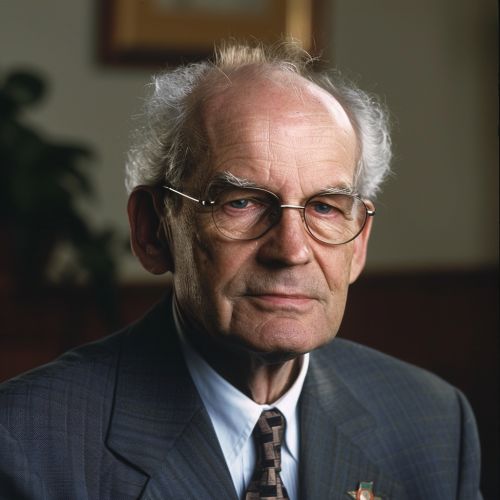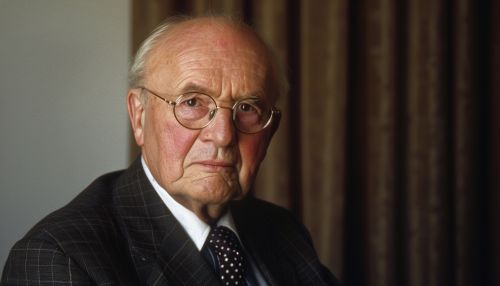Hans Bethe
Early Life and Education
Hans Albrecht Bethe was born on July 2, 1906, in Strasbourg, which was then part of the German Empire. His father, Albrecht Bethe, was a professor of physiology, and his mother, Anna, was of Jewish descent. Bethe showed an early aptitude for mathematics and physics, which led him to pursue these subjects academically. He attended the Goethe-Gymnasium in Frankfurt and later went on to study at the University of Frankfurt and the University of Munich. Under the guidance of Arnold Sommerfeld, Bethe completed his doctorate in theoretical physics in 1928 with a dissertation on electron diffraction in crystals.
Academic Career and Contributions
Early Research
After completing his doctorate, Bethe held various academic positions across Europe. He worked with Enrico Fermi in Rome, where he was introduced to nuclear physics. His early research focused on quantum mechanics and solid-state physics. Bethe's work on the theory of metals and the Bethe ansatz, a method for solving certain quantum mechanical problems, laid the foundation for his future contributions.
Nuclear Physics
In the 1930s, Bethe moved to the United States, where he joined the faculty at Cornell University. During this period, he made significant contributions to nuclear physics, particularly in understanding nuclear reactions and energy production in stars. His work on nuclear reaction cross-sections and the Bethe-Weizsäcker formula, which describes the binding energy of nuclei, was groundbreaking. Bethe's research provided crucial insights into the processes that power stars, including our Sun.
Stellar Nucleosynthesis
One of Bethe's most notable achievements was his work on stellar nucleosynthesis. In 1938, he published a seminal paper on the carbon-nitrogen-oxygen (CNO) cycle, a set of nuclear fusion reactions that occur in stars. This work earned him the Nobel Prize in Physics in 1967. The CNO cycle explained how stars convert hydrogen into helium, releasing energy in the process. Bethe's research in this area was instrumental in advancing our understanding of stellar evolution and the life cycle of stars.


World War II and the Manhattan Project
During World War II, Bethe played a crucial role in the development of nuclear weapons as part of the Manhattan Project. He was appointed as the head of the Theoretical Division at Los Alamos National Laboratory. Bethe's leadership and expertise were vital in solving many of the theoretical problems associated with the design and construction of the atomic bomb. His work on implosion dynamics and neutron transport was critical to the success of the project.
Post-War Contributions
Advocacy and Policy
After the war, Bethe became an advocate for the peaceful use of nuclear energy and arms control. He was a key figure in the development of the hydrogen bomb but later campaigned against nuclear proliferation. Bethe advised several U.S. presidents on nuclear policy and was a vocal proponent of the Nuclear Test Ban Treaty.
Academic Work
Bethe returned to Cornell University after the war, where he continued his research and teaching. He made significant contributions to quantum electrodynamics (QED) and the theory of matter at high densities. Bethe's work on the Lamb shift, a small difference in energy levels of the hydrogen atom, was particularly noteworthy. His research in this area helped to confirm the validity of QED and earned him widespread recognition.
Legacy and Honors
Hans Bethe's contributions to physics were recognized with numerous awards and honors throughout his career. In addition to the Nobel Prize, he received the Enrico Fermi Award, the National Medal of Science, and the Max Planck Medal. Bethe was also a member of several prestigious scientific organizations, including the National Academy of Sciences and the Royal Society.
Personal Life
Bethe married Rose Ewald in 1939, and they had two children. He was known for his humility and dedication to science. Bethe continued to work on scientific problems well into his later years, maintaining an active presence in the academic community until his death on March 6, 2005.
